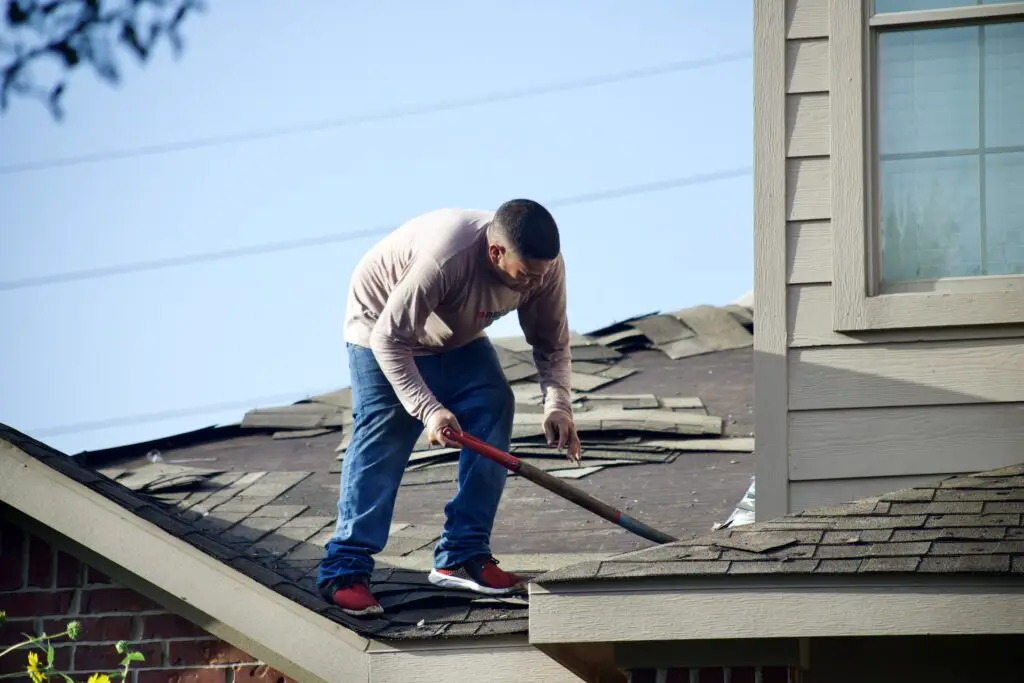From modern shingle roofs to traditional metal designs, replacing your home’s existing roof can feel like a daunting task with a lot of moving parts. While it is an involved process, a better understanding of what’s required can help you make informed decisions about the best materials and systems for your needs. In this guide, we’ll provide you with step-by-step guidance on how to replace your roof to ensure that the job is done correctly and efficiently.
How Do You Know a Roof Replacement Is Due?
Before we delve into the specifics of the roof replacement process, it’s critical to understand when your roof might need a helping hand. The need for a new roof isn’t always as obvious as a gaping hole above your dining room. There are several signs and indications that can hint at an impending roof replacement. Let’s look at some of the most common indicators.
Persistent Leaks
One of the most undeniable signs that your roof could use a replacement is persistent leaks, especially after rainfall. If you consistently find water stains on your ceiling or running down your walls, it’s a strong indication that your roof is failing to keep the elements out.
Damaged or Missing Shingles
If your roof’s shingles are cracked, damaged, or entirely missing, it’s a clear sign that your roof may need a replacement. Damaged shingles expose the underlayment and decking to the elements, leading to potential leaks and further damage.

Sagging Roof Deck
A sagging roof deck is a serious indication of structural issues that could require a complete roof replacement. If the roofline is not straight but dips in the middle or at certain points, it’s time to call in the professionals.
Moss or Algae Growth
Excessive moss or algae growth on your roof can be more than just an aesthetic issue. These growths can trap moisture and cause damage to your roof over time, leading to the need for replacement.
Age of the Roof
Lastly, the age of your roof can be a good indicator of its health. Most roofs, depending on the material, are designed to last between 20-30 years. If your roof is nearing or has surpassed this age range, it may be time to consider a replacement.
The Roof Replacement Process
Once you’ve identified the need for a roof replacement, it’s essential to understand the steps involved in the process. Here is an overview of what you can expect during a typical roof replacement.
Step 1: Inspection and Assessment
The first step in replacing your roof is to have it inspected by a professional roofing contractor. They will assess the condition of vital parts of the roof, identify any underlying issues, and recommend the best course of action.
Step 2: Choosing Materials
Based on the roofing contractor’s recommendations and your preferences, you’ll need to choose the materials for your new roof. Depending on your budget, climate, and personal preference, these can include shingles, metal sheets, or other options.
Step 3: Removing Old Roofing
Before the installation of a new roof can begin, the old roofing materials must be removed. This process involves stripping off all shingles, underlayment, and flashing to expose the roof deck.
Step 4: Repairing or Replacing Decking
Once the old roofing materials are removed, any damaged or rotten decking will need to be replaced. This step ensures a strong and stable foundation for your new roof.
Step 5: Installing Underlayment and Flashing
After repairing or replacing the decking, the next step is to install a water-resistant underlayment and flashing. These materials provide an extra layer of protection against leaks and moisture.
Step 6: Installing New Roofing Materials
With all the preparation work completed, it’s time to start installing your new roofing materials. This process can vary depending on the type of materials chosen, but it typically involves laying down shingles or metal sheets and securing them with nails or screws.
Step 7: Final Inspection
Once the installation is complete, a final inspection will be carried out to ensure everything is done correctly. This step is crucial in identifying potential issues and ensuring that your new roof meets all safety and building code requirements.
Roof Maintenance Cheat Sheet
Maintaining your new roof is just as important as the process of replacing it. Proper maintenance can significantly extend the lifespan of your roofing system, preventing premature wear and tear and saving you money in the long run.
Here, we provide a handy cheat sheet to guide you through essential roof maintenance procedures to ensure that your new roof remains in top condition for as long as possible.
Regular Inspections
Regular inspections are vital to early detection of potential issues. Make it a habit to visually inspect your roof at least twice a year, preferably in spring and fall. Look for signs of damage, such as missing, cracked, or curled shingles, rusted flashing, and moss or algae growth.
Clean Gutters
Keeping gutters clean and clear of debris can prevent water from backing up against the roof and seeping underneath, causing damage over time. Make sure to clean out your gutters at least twice a year or more frequently if you live in an area with lots of trees.
Trim Overhanging Branches
Overhanging branches can scrape and damage roofing materials and falling leaves can accumulate on the roof, attracting moisture and leading to rot. Trim any branches that come too close to your roof to prevent any potential damage.
Check Attic Insulation and Ventilation
Proper attic insulation and ventilation can help regulate your roof’s temperature, preventing ice dams in the winter and reducing heat absorption in the summer. Make sure your attic is adequately insulated and ventilated to improve your roof’s lifespan.
Professional Maintenance
While there’s a lot you can do yourself, some tasks require professional expertise. Schedule regular professional maintenance checks to ensure all aspects of your roof system are functioning properly. This will also help identify any potential problems before they become major issues.
Conclusion
A roof replacement can seem like a daunting task, but understanding the process and following proper maintenance procedures can help ensure that your new roof lasts for decades to come. Inspect your roof regularly, keep gutters clean, trim overhanging branches, check attic insulation and ventilation, and schedule professional maintenance when needed.
By taking these steps, you can protect your home and keep your roof in top condition for years to come. If you notice any signs of damage or aging on your roof, don’t hesitate to call in the professionals and start the process of replacing your roof. Remember these tips and enjoy a safe, secure, and long-lasting roofing system for your home.




